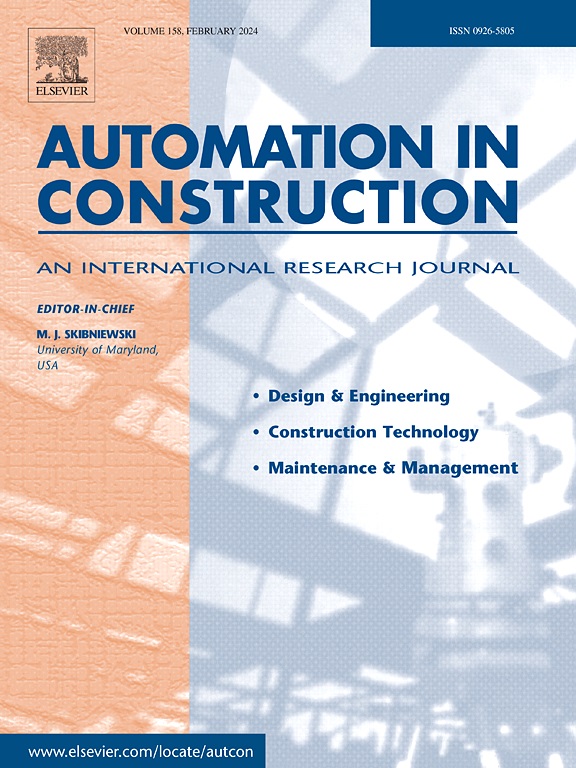Analysis of masonry work activity recognition accuracy using a spatiotemporal graph convolutional network across different camera angles
IF 9.6
1区 工程技术
Q1 CONSTRUCTION & BUILDING TECHNOLOGY
引用次数: 0
Abstract
Human activity recognition (HAR) in construction has gained attention for its potential to improve safety and productivity. While HAR research has shifted toward vision-based approaches, many studies typically use data from a specific angle, limiting understanding of how camera angles affect accuracy. This paper addresses this gap by using AlphaPose and Spatial-Temporal Graph Convolutional Network (ST-GCN) algorithms to analyze the impact of various camera angles on HAR accuracy in masonry work. Data was collected from seven angles (0° to 180°), with the frontal view only used for training. Results showed consistently high recognition accuracy (>80 %) for side views, while accuracy decreased as the camera shifted toward rear views, especially from directly behind due to occlusion. By quantifying HAR accuracy across angles, this study provides baseline data for predicting performance from various camera positions, improving camera placement strategies and enhancing monitoring system effectiveness on construction sites.
基于时空图卷积网络的不同摄像机角度砌体工作活动识别精度分析
人类活动识别(HAR)在建筑施工中的应用因其提高安全性和生产率的潜力而受到关注。虽然HAR研究已经转向基于视觉的方法,但许多研究通常使用特定角度的数据,限制了对相机角度如何影响精度的理解。本文通过使用AlphaPose和时空图卷积网络(ST-GCN)算法来分析不同摄像机角度对砌体工程中HAR精度的影响,从而解决了这一空白。数据从7个角度(0°到180°)收集,正面视图仅用于训练。结果显示,侧视图的识别准确率始终很高(> 80%),而当摄像头移到后视图时,准确率会下降,特别是由于遮挡而从正后方移动时。通过量化各个角度的HAR精度,本研究为预测不同摄像机位置的性能、改进摄像机放置策略和提高建筑工地监测系统的有效性提供了基线数据。
本文章由计算机程序翻译,如有差异,请以英文原文为准。
求助全文
约1分钟内获得全文
求助全文
来源期刊

Automation in Construction
工程技术-工程:土木
CiteScore
19.20
自引率
16.50%
发文量
563
审稿时长
8.5 months
期刊介绍:
Automation in Construction is an international journal that focuses on publishing original research papers related to the use of Information Technologies in various aspects of the construction industry. The journal covers topics such as design, engineering, construction technologies, and the maintenance and management of constructed facilities.
The scope of Automation in Construction is extensive and covers all stages of the construction life cycle. This includes initial planning and design, construction of the facility, operation and maintenance, as well as the eventual dismantling and recycling of buildings and engineering structures.
 求助内容:
求助内容: 应助结果提醒方式:
应助结果提醒方式:


